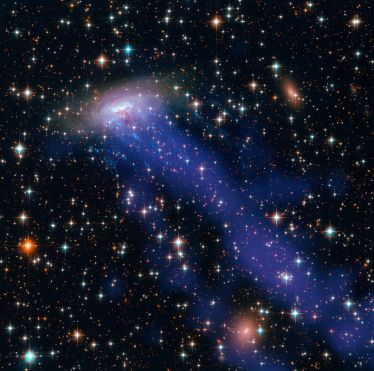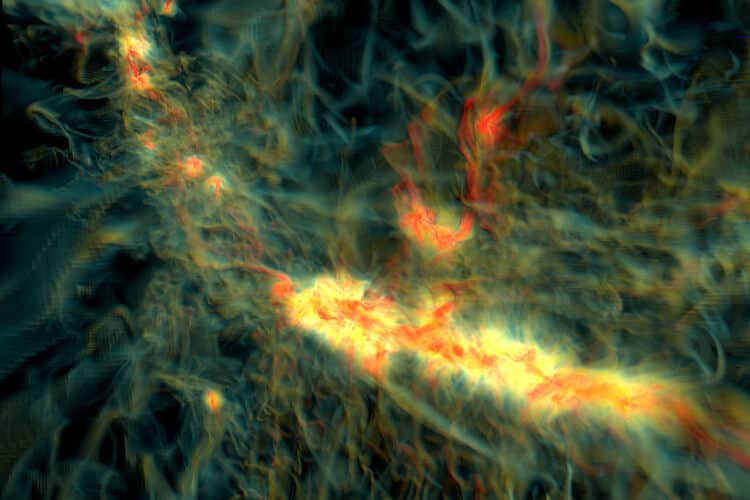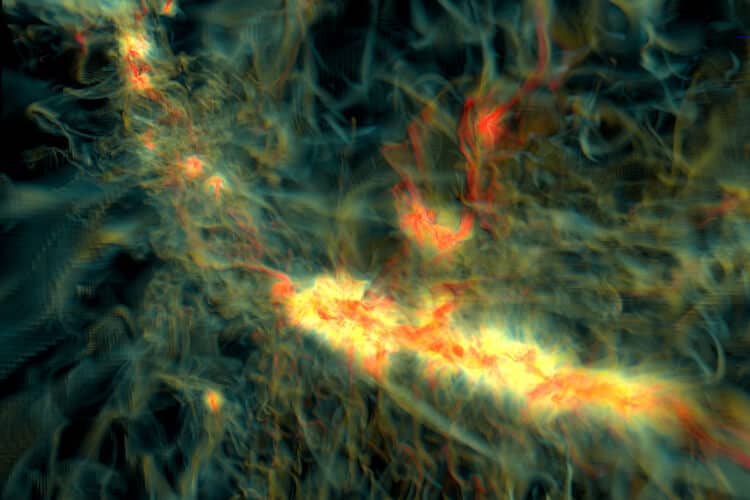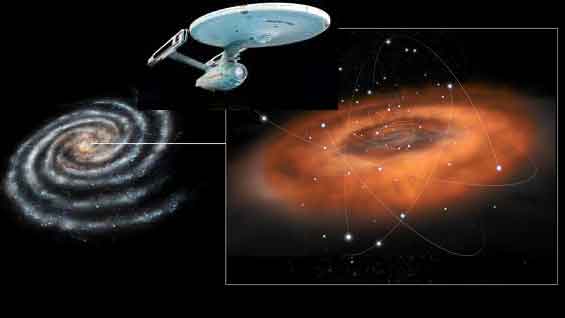Galaxies are available in three primary shapes – elliptical, spiral (such because the Milky Means) and irregular. They are often huge or small. So as to add to this combine, galaxies may also be blue or crimson. Blue galaxies are nonetheless actively forming stars. Purple ones principally will not be at present forming stars, and are thought of passive.
The processes that trigger galaxies to “quench,” that’s, stop star formation, will not be nicely understood, nevertheless, and represent an excellent downside within the research of the evolution of galaxies. Now, utilizing a big pattern of round 70,000 galaxies, a staff of researchers led by College of California, Riverside astronomers Behnam Darvish and Bahram Mobasher could have an evidence for why galaxies cease creating stars.
The analysis staff, which included scientists on the California Institute of Expertise and Lancaster College, United Kingdom, combed via accessible knowledge from the COSMOS UltraVISTA survey that give correct distance estimates for galaxies over the previous 11 billion years, and centered on the results of exterior and inside processes that affect star formation exercise in galaxies.
Exterior mechanisms, the analysis staff notes, embrace drag generated from an infalling galaxy inside a cluster of galaxies, which pulls gasoline away; a number of gravitational encounters with different galaxies and the dense surrounding atmosphere, leading to materials being stripped away from the galaxy; and the halting of the availability of chilly gasoline to the galaxy, thus strangling the galaxy of the fabric wanted to supply new stars over a protracted time frame.

The researchers clarify that inside mechanisms embrace the presence of a black gap (by which jets, winds, or intense radiation warmth up hydrogen gasoline within the galaxy or blow it out fully, thus stopping the gasoline from cooling and contracting to type stars) and “stellar outflow” (for instance, high-velocity winds produced by huge younger stars and supernovae that push the gasoline out of the host galaxy).
“By utilizing the observable properties of the galaxies and complicated statistical strategies, we present that, on common, exterior processes are solely related to quenching galaxies over the past eight billion years,” stated Darvish, a former graduate pupil within the UC Riverside Department of Physics and Astronomy and the primary creator of the research paper that seems at this time in The Astrophysical Journal. “Then again, inside processes are the dominant mechanism for shutting off star-formation earlier than this time, and nearer to the start of the universe.”
The discovering offers astronomers an vital clue in the direction of understanding which course of dominates quenching at numerous cosmic instances. As astronomers detect quenched non-star-forming galaxies at totally different distances (and subsequently instances after the Huge Bang), they now can extra simply pinpoint what quenching mechanism was at work.
In astronomy, a lot debate continues on whether or not it is just inside, exterior or a mixture of each phenomena that make a galaxy quench star formation. It’s nonetheless not clear what processes are principally accountable, and unclear, too, is the fractional position of various bodily processes in shutting down the star-formation. It is usually not absolutely understood when these processes come to play an vital position within the evolutionary lifetime of galaxies.

“The state of affairs turns into extra advanced once we understand that each one these mechanisms could depend upon properties of galaxies being quenched, they could evolve with time, they act at totally different time-scales – quick or gradual – they usually could depend upon the properties of the quenching components as nicely,” Darvish stated.
Mobasher, a professor of physics and astronomy who supervised Darvish in the course of the course of the analysis, stated, “We discovered that on common the exterior processes act in a comparatively quick time-scale, round one billion years, and may extra effectively quench galaxies which might be extra huge. Inner results are extra environment friendly in dense clusters of galaxies. The time-scale is essential. A short while-scale means that we have to search for exterior bodily processes which might be quick in quenching. One other vital results of the work is that inside and exterior processes don’t act independently of one another in shutting-off the star formation.”
Darvish and Mobasher had been joined within the analysis by David Sobral at Lancaster College, the UK; and Alessandro Rettura, Nick Scoville, Andreas Faisst and Peter Capak on the California Institute of Expertise. Darvish graduated from UCR with a Ph.D. in astronomy in 2015. The majority of the analysis was accomplished whereas he was working towards his doctoral diploma. He’s now a postdoctoral scholar at Caltech. Subsequent, the analysis staff will work on extending this research to the atmosphere of galaxies on a lot bigger scales (within the cosmic net). The analysis was funded by monetary assist from NASA.



